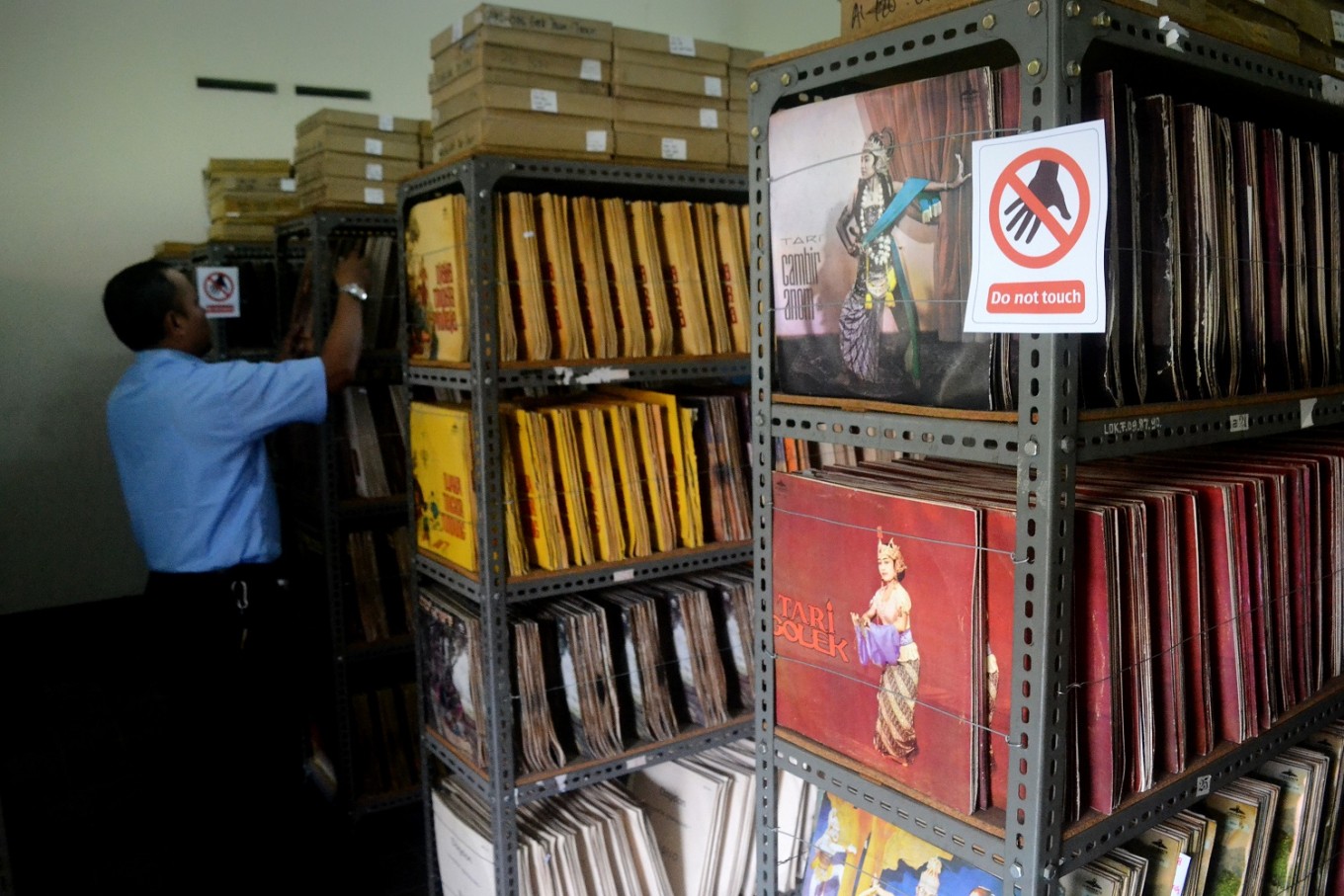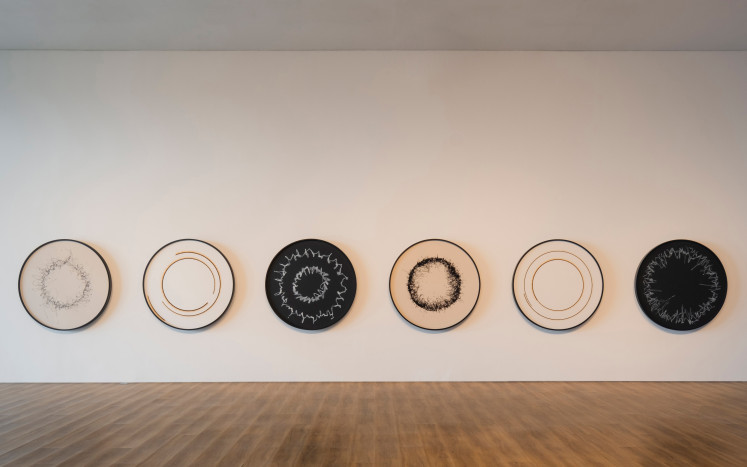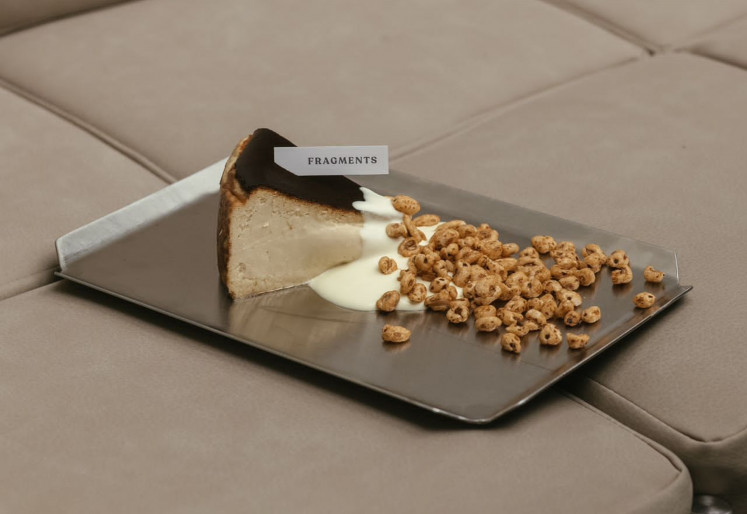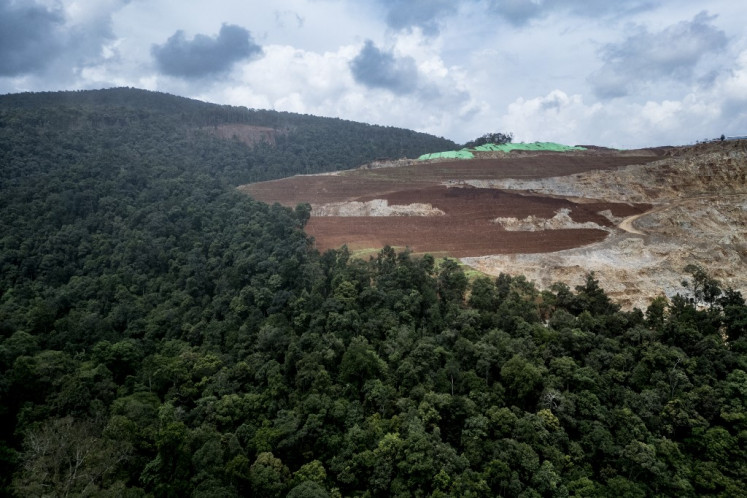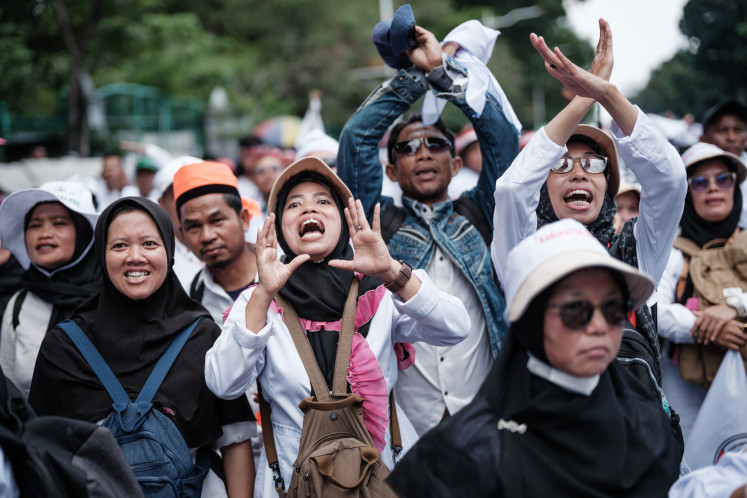Popular Reads
Top Results
Can't find what you're looking for?
View all search resultsPopular Reads
Top Results
Can't find what you're looking for?
View all search resultsRacing against time to preserve history at Lokananta recording studio
Indonesia’s first recording studio and music label, Lokananta, manages to thrive despite its old age.
Change text size
Gift Premium Articles
to Anyone
R
ecorded 62 years ago, Waldjinah’s first album can still be enjoyed in its original analog format. Ratu Kembang Katjang by the popular keroncong (Indonesian string ensemble mixing Western instruments and Indonesian musical styles) songstress is among the thousands of records stored at Lokananta studio in Surakarta, Central Java, which range from those recorded in the 1950s to contemporary ones.
Lokananta was established on Oct. 29, 1956, as the first recording studio and music label in Indonesia, tasked with producing and duplicating the broadcasted material of Indonesian Republic Radio (RRI). Since 2004, it has been a branch of state printing company Percetakan Negara RI (PNRI).
Lokananta houses the approximately 5,670 master records and 53,000 vinyl records that the studio has produced since the 1950s. On those records one can find traditional songs, contemporary pop albums, or works by Indonesian legends such as Gesang, Basiyo, Titiek Puspa, Sam Saimun and Bing Slamet. Two of the most prized records in the studio are the live recording of the 1945 Proclamation of Independence and national anthem “Indonesia Raya” in its full three-verse version.
The studio is now facing the daunting task of preserving thousands of historical records, which have been kept for decades in sub-par conditions. Bemby Ananto, Lokananta’s production coordinator, said that several rooms in the studio were not yet equipped with air conditioning, which is vital to minimize humidity. “And since Lokananta is an old building, we have to be cautious at all times, especially during the rainy season,” he said.
Other than the risk of a leaking roof, the studio also has to face its littlest, biggest nemeses: termites. They eat record covers, which are made of paper, and make nests on the vinyl. Getting rid of the termites with chemical solutions would risk ruining the vinyl, and the record covers are considered historical artifacts containing art and music photography from the 1950s to the 1970s. The covers may be preserved through reprography (reproducing graphics through mechanical or electrical means) and digital enhancement.
Read also: Five facts about Surakarta’s musical landmark, Lokananta
Alongside physical means of preservation, Lokananta is remastering and digitizing its analog records. So far, the studio has converted 90 percent of its master records.
The new digital archives can serve music fans whose Lokananta records are in poor condition, offering new and improved versions of the records.
Of the thousands of digitally converted records, 400 of them have been reproduced in CD and cassette-tape format. Most of them are Javanese traditional music such as keroncong, wayang kulit (leather puppetry) and music for traditional dances.
This year, Lokananta plans to bring the digitized albums to an online platform and bring back vinyl production. The studio stopped producing vinyl records in 1972. “These plans are major projects, and they need support from the government and other stakeholders for funding and human resources,” said Bemby.
Despite its limitations and problems, Lokananta is keeping up with the times. The studio is considered legendary, and contemporary artists take turns to record their albums or perform there. It has also become one of the preferred destinations for travelers to Surakarta. At Lokananta, the music lives on. (wng)

